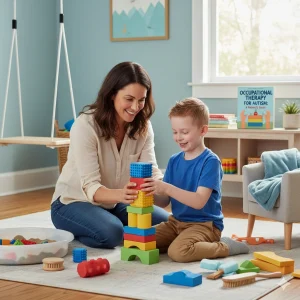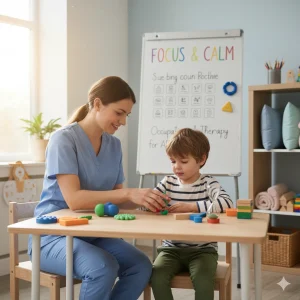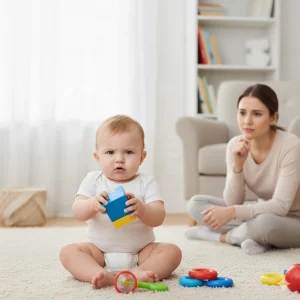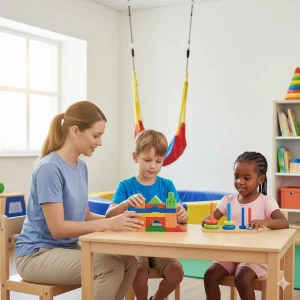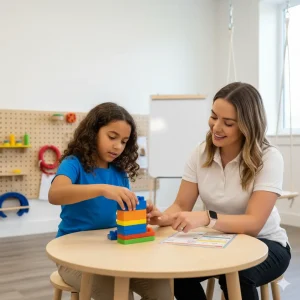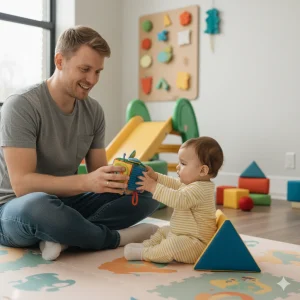How Physical, Occupational, and Vocational Therapy Differ
By Prapoorna M
Last Updated: September 11, 2024
Have you ever wondered about the different types of therapy available and how they can help you or a loved one? Understanding the differences between physical therapy, occupational therapy, and vocational therapy is crucial because the right type of therapy can significantly impact your recovery and overall quality of life.
Choosing the correct therapy tailored to your specific needs can mean the difference between a smooth, successful recovery and prolonged challenges. Each therapy type has unique benefits designed to address various aspects of physical, mental, and occupational health. Whether you are recovering from an injury, adjusting to a disability, or looking to improve your daily living skills, knowing which therapy is right for you is essential.
What is Physical Therapy?
Definition and Purpose
Physical therapy (PT) is a specialized branch of rehabilitative health that focuses on enhancing and restoring movement and functional ability. If you’ve ever suffered from an injury or are experiencing mobility issues, PT is designed to help you regain your physical abilities.
Key Features
Rehabilitation after Injuries:
Physical therapy plays a crucial role in the recovery process following various injuries, such as sports injuries, strokes, and spinal injuries. It’s especially beneficial for individuals who have undergone amputations. The primary goal is to help you return to your pre-injury level of physical function.
Emphasis on Exercises and Treatments:
A key component of physical therapy is a personalized exercise program. These exercises are tailored to your specific needs and may include stretches and hands-on treatments. This structured approach helps in reducing pain, improving mobility, and preventing further injuries.
Goals of Physical Therapy: The main objectives of PT are to:
- Reduce Pain: Alleviate discomfort through targeted exercises and treatments.
- Restore Mobility: Improve your ability to move and perform daily activities.
- Prevent Further Injuries: Strengthen your body to avoid future issues.
Common Conditions Treated: Physical therapy is versatile and can treat a wide range of conditions, including:
- Stroke: Rehabilitation to regain lost motor skills and improve balance.
- Sports Injuries: Recovery from strains, sprains, and other sports-related injuries.
- Spinal Injuries: Assistance with mobility and pain management post-spinal injury.
- Amputations: Helping individuals adapt to prosthetics and regain functional mobility.
Role of Physical Therapists
- Personalized Care Plans: Physical therapists develop customized care plans based on your specific needs and progress. This individualized approach ensures that you receive the most effective treatment.
- Progression of Exercises: As you advance in your therapy, your exercises will be adjusted to increase in intensity. This gradual progression helps build strength and improve function over time.
- Importance of Patient Education and Motivation: A significant aspect of physical therapy is educating patients about their conditions and how to manage them. Physical therapists also serve as motivators, encouraging you to stay committed to your treatment plan and achieve your recovery goals.
What is Occupational Therapy?
Definition and Purpose
Occupational therapy (OT) is dedicated to helping individuals perform daily activities that are meaningful to them. Whether it’s dressing, cooking, or engaging in hobbies, OT focuses on enabling people to lead more independent and fulfilling lives.
Also read: When and Why a Child Needs Occupational Therapy
Key Features
Adaptation of Activities, Environment, and Skills:
Occupational therapists work on modifying activities and environments to fit the needs of the individual. This might mean changing how a task is performed, altering the physical space, or developing new skills to improve daily functioning.
Goals of Occupational Therapy:
The primary objectives of OT include:
- Improving Fine Motor Skills: Enhancing small muscle movements essential for tasks like writing, buttoning clothes, or using utensils.
- Enhancing Daily Living Skills: Assisting with everyday activities such as bathing, eating, and dressing.
- Mental Health Support: Providing strategies to cope with stress, anxiety, and other mental health challenges.
Also read: Empowering Kids: Occupational Therapy for Down Syndrome
Common Conditions Treated:
Occupational therapy can be beneficial for a variety of conditions, including:
- Intellectual or Developmental Delays: Helping children and adults develop the skills needed for daily life.
- Mental Health Challenges: Offering support for individuals dealing with mental health issues, helping them manage daily activities.
- Post-Injury Recovery: Assisting patients in regaining independence after an injury or surgery.
Role of Occupational Therapists
- Holistic Approach: Occupational therapists take a comprehensive approach that considers physical, emotional, and environmental factors. They focus on the whole person, not just the injury or condition, to develop a therapy plan that supports overall well-being.
- Focus on Meaningful Activities: A key element of OT is its emphasis on activities that are meaningful to the patient. Whether it’s returning to work, enjoying hobbies, or managing household tasks, therapists tailor their strategies to help individuals achieve their personal goals.
- Patient Independence: Ultimately, the goal of occupational therapy is to foster independence. Therapists provide the tools and strategies needed to help individuals manage their daily lives effectively, boosting their confidence and quality of life.
What is Vocational Therapy?
Definition and Purpose
Vocational therapy (VT) is focused on assisting individuals in returning to work or finding suitable employment. This type of therapy is crucial for those whose injuries or disabilities have impacted their ability to work, helping them to regain independence and thrive in their careers.
Key Features
Assessment of Abilities and Matching with Job Opportunities
Vocational therapists start by thoroughly assessing a person’s abilities, interests, and job skills. They then match these attributes with appropriate job opportunities, ensuring a good fit that aligns with the individual’s capabilities and goals.
Goals of Vocational Therapy
The primary objectives of VT include:
- Enhancing Employability: Developing the skills and confidence needed to secure employment.
- Job Retention: Providing ongoing support to help individuals maintain and excel in their jobs.
Common Conditions Treated
Vocational therapy is beneficial for a variety of conditions, such as:
- Traumatic Brain Injuries: Assisting individuals in adapting to cognitive and physical changes post-injury.
- Stroke: Helping stroke survivors regain skills and find jobs that accommodate their new abilities.
- Physical Deformities: Supporting individuals in finding roles that match their physical capabilities.
- Cognitive Disabilities: Providing strategies and support to help those with cognitive challenges succeed in the workplace.
Role of Vocational Therapists
- Providing Resources, Coaching, and Support: Vocational therapists offer a range of resources and coaching to assist individuals in their job search and career development. This includes resume building, interview preparation, and job training tailored to the individual’s needs.
- Emphasis on Abilities Rather than Limitation: A key philosophy in vocational therapy is focusing on what individuals can do, rather than what they cannot. Therapists work to identify and enhance strengths, providing a positive and empowering approach to job reentry and career success.
Comparing the Three Therapies
Physical Therapy vs. Occupational Therapy
When it comes to physical therapy (PT) and occupational therapy (OT), the main difference lies in their focus areas. Physical therapy primarily targets movement and mobility. PTs work on improving gross motor skills, which involve large body movements, to help patients recover from injuries, reduce pain, and restore physical function. They use exercises, stretches, and hands-on treatments to achieve these goals.
On the other hand, occupational therapy focuses on daily activities and fine motor skills. OTs help individuals adapt to their environment and modify tasks to enhance their ability to perform everyday activities. This includes improving fine motor skills needed for tasks like dressing, eating, and using technology. OTs also address cognitive and mental health issues, offering a more holistic approach to rehabilitation.
Physical Therapy vs. Vocational Therapy
While physical therapy aims at physical rehabilitation and improving movement, vocational therapy (VT) is centered on job readiness and employability. PTs work with patients to recover from physical injuries and enhance their mobility, focusing on exercises and treatments that reduce pain and prevent further injuries.
In contrast, vocational therapists assess an individual’s abilities and match them with suitable job opportunities. VT helps individuals with traumatic brain injuries, strokes, or cognitive disabilities to develop the skills needed to reenter the workforce. The primary goal of VT is to enhance employability and ensure job retention by providing resources, coaching, and support tailored to the individual’s capabilities.
Occupational Therapy vs. Vocational Therapy
Occupational therapy and vocational therapy have distinct focus areas. OT is about holistic daily living. OTs help patients perform meaningful daily activities, considering both physical and mental health aspects. They work on improving fine motor skills and adapting environments to make daily tasks easier, providing comprehensive support for overall well-being.
Vocational therapy, however, is specifically focused on work-related skills and employment. VTs assist individuals in finding and maintaining jobs that match their abilities, often following significant injuries or disabilities. They emphasize what individuals can do, rather than their limitations, and provide the necessary tools and support for successful job market reentry.
Choosing the Right Therapy for You
Assessment of Needs
When deciding which type of therapy is right for you, start by assessing your specific needs and conditions. Are you recovering from a physical injury and need to regain mobility? Or perhaps you’re struggling with daily activities and require assistance in adapting to your environment? Maybe you’re looking to return to work after a significant injury or disability. Understanding your primary challenges is the first step in choosing the right therapy.
Consulting Professionals
Consulting with healthcare professionals is crucial in determining the best therapy plan for you. Therapists can provide expert advice based on your medical history and current condition. Physical therapists, occupational therapists, and vocational therapists each bring unique skills and perspectives to the table. By consulting with a therapist, you can develop a personalized treatment plan that addresses your specific needs. At Wellness Hub, we offer consultations to help you make informed decisions about your therapy options.
Combining Therapies
Sometimes, a combination of therapies can be the most beneficial approach. For instance, if you’re recovering from a stroke, you might need physical therapy to regain movement and occupational therapy to relearn daily activities. Vocational therapy can then help you return to work once you’ve regained sufficient function. Combining different therapies ensures a comprehensive recovery plan that covers all aspects of your rehabilitation.
Conclusion
In summary, understanding the differences between physical therapy, occupational therapy, and vocational therapy is key to choosing the right path to recovery. Physical therapy helps improve movement and mobility, making it great for those recovering from physical injuries. Occupational therapy assists with daily activities by adapting the environment and improving fine motor skills, which is beneficial for those with developmental delays, mental health challenges, or post-injury recovery. Vocational therapy focuses on helping individuals return to work by enhancing job readiness and employability.
Choosing the right therapy depends on your specific needs. Consulting with professionals can provide you with a personalized therapy plan to maximize your recovery and quality of life. At Wellness Hub, we offer a range of professional therapists and resources to help you find the best therapy options. Whether you need physical, occupational, or vocational therapy, our experts are here to guide you.
Frequently Asked Questions:
1. What is the main difference between physical therapy and occupational therapy?
Physical therapy focuses on improving movement and mobility, while occupational therapy helps individuals perform daily activities by adapting their environment and improving fine motor skills.
2. How does vocational therapy help individuals return to work?
Vocational therapy helps individuals return to work by assessing their abilities, providing job training, and offering resources and coaching to enhance employability and job retention.
3. Can I combine physical, occupational, and vocational therapy?
Yes, combining different types of therapy can be beneficial. For example, you might need physical therapy to recover mobility, occupational therapy to adapt daily activities, and vocational therapy to return to work.
4. What conditions can physical therapy treat?
Physical therapy can treat conditions such as stroke, sports injuries, spinal injuries, and amputations by improving mobility, reducing pain, and preventing further injuries.
5. Who can benefit from occupational therapy?
Occupational therapy can benefit individuals with intellectual or developmental delays, mental health challenges, and those recovering from injuries, helping them perform daily activities more independently.
6. What types of conditions are best suited for vocational therapy?
Vocational therapy is best suited for individuals with traumatic brain injuries, strokes, physical deformities, and cognitive disabilities, helping them return to work and maintain employment.
7. How do I know which therapy is right for me?
Assess your specific needs and consult with professionals to determine the best therapy plan. A therapist can help you decide whether physical, occupational, or vocational therapy, or a combination, is best for your situation.
8. What are the goals of physical therapy?
The main goals of physical therapy are to reduce pain, restore mobility, improve function, and prevent further injuries through exercises, stretches, and hands-on treatments.
9. How does occupational therapy support mental health?
Occupational therapy supports mental health by providing strategies to manage stress, anxiety, and other mental health challenges, helping individuals improve their overall well-being and daily functioning.
10. Where can I find professional therapists for these therapies?
At Wellness Hub, we offer a range of professional therapists and resources to help you find the best therapy options for your needs.
About the Author:
Prapoorna Mangalampalli
M.Sc., M.A., (Dual Masters in Psychology & English) – Counselor (6+ years of experience)
Prapoorna is a skilled counselor with dual Master’s degrees in Psychology and English. With more than six years of professional experience, she specializes in providing various types of counseling, including online Therapy , Marital , Relationship, child, family, and career counseling. Prapoorna is part of the Wellness Hub team, where she contributes significantly to their mission. She values a team-based approach and is committed to innovation, compassion, and the success of her clients. Her diverse educational background and extensive experience enable her to offer insightful and effective counseling services that positively impact individuals and families.
Book your Free Consultation Today
Parent/Caregiver Info:
Client’s Details:
* Error Message


